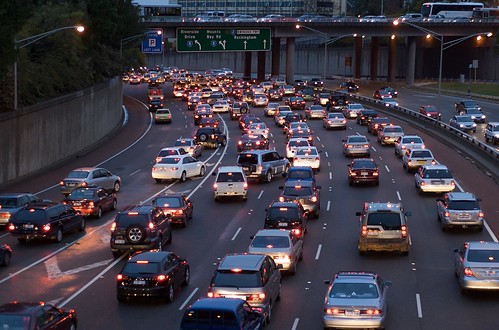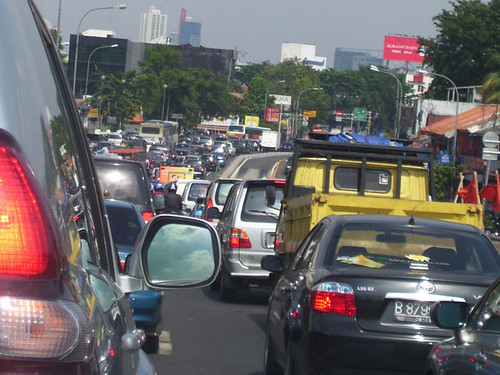Elvira, Mistress of the Dark, when questioned one night on a television talk show about what makes her so popular, responded: “I’m like a bad car wreck on the freeway. You know you shouldn’t stare but you just can’t help it.”

We can’t help it, can we? While hardly unique, an accident that brought the State Route 60 in Rowland Heights, California to a crawl one afternoon provides a perfect example. Just past the State Route 57 interchange, three crumpled compact cars limped to the right shoulder and died. The respective occupants and a highway patrol officer surveyed the situation, rounding out the classic picture of an accident scene. For a few miles in either direction cars passed by at the speed of a funeral procession so their drivers could ogle the unfolding scenario.
Admit it. Most of us do stop and stare — with costly consequences, too. The statisticians at the some urban traffic-safety centers calculate that rubbernecking causes more unnecessary traffic congestion than any other behavior.
So why do we do it? Are we really that morbid? Do we really revel in the misfortunes of other people?
“Not at all,” answered Mark Rafter, former assistant professor of psychology at Chaffey College in Rancho Cucamonga, California. “We stare because that’s the way we are built. It is perfectly normal for us to respond to unusual stimuli with an increased level of attention. In fact, having a sense of curiosity is healthy.”
Rafter also said that this “novelty interest” increases our chances of survival. Instinct
dictates that we examine any unnecessary phenomenon — such as the brightly flashing blue and red lights of an emergency vehicle — lest it be a threat to our own safety.
“There are other factors as well,” Rafter added. “Freeway wrecks provide us with the rare opportunity to double check our best guess as to the cause of the delay.”
Goodness knows that we are granted plenty of time to wonder what happened when stuck in a long backup. When we finally arrive upon the accident scene, we are usually presented with conclusive evidence of just what the problem was. Then there is the frustrating fact that the very slowing of traffic that a collision creates lends us the perfect chance to really get a good look at it. Evidently our voyeuristic tendencies tend to complicate matters.
However, being the individuals that we are, not all of us stare with the same intensity, according to Rafter.
“Each person strives to maintain their own optimal level of arousal,” Rafter pointed out. “Extroverts need to seek out exciting events to get to normal, so they really stop and gawk, whereas introverts require much less stimulation and tend to look away from tragic occurrences.”
In the final analysis, there’s really no need for us to feel too guilty about where we cast our eyes, at least according to one expert. On the other hand, traffic would certainly move a lot smoother if we elevated ourselves above our basic instincts and just kept our eyes on the road.
©2009, Dr. Roadmap®
_________________________________________________________________________________________
David Rizzo, better known as Dr. Roadmap, a Commute Management expert who writes about issues such as improving gas mileage (mpg), alternate routes, traffic congestion, ridesharing, commuting behavior and intelligent transportation systems on California’s Orange Country Register. He is well known for his comprehensive guide ever written on off-freeway commuting in Southern California, published in 1990. Two years later he became the first traffic reporter to offer daily alternate routes in real time over the air on one of the most popular morning radio shows in Los Angeles. His bi-weekly columns appear exclusively for TransportGooru. This is copyright-protected content. Please contact Transportgooru if you like to use this article or portions of this article.







 On average, Americans spent 13 fewer hours stuck in traffic in 2008 than in 2007, according to an
On average, Americans spent 13 fewer hours stuck in traffic in 2008 than in 2007, according to an